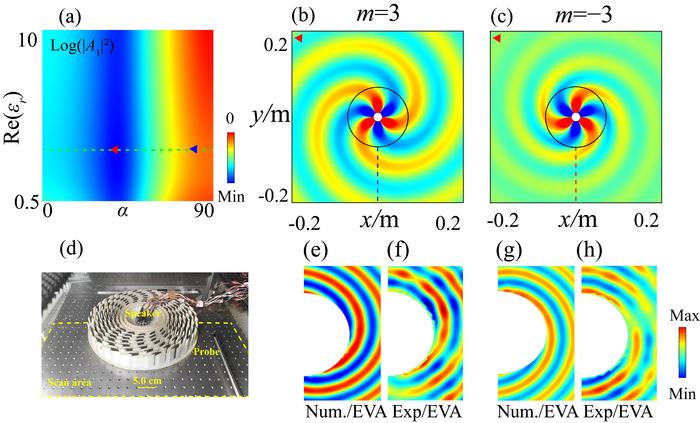This study is led by professor Huanyang Chen (Department of Physics, College of Physical Science and Technology, Xiamen University) and Dr. Shan Zhu (Quantum Science Center of Guangdong–Hongkong–Macao Greater Bay Area). They have presented a universal theory of angular Brewster effect, enabling control of both momentum and orbit angular momentum (OAM).

Credit: ©Science China Press
This study is led by professor Huanyang Chen (Department of Physics, College of Physical Science and Technology, Xiamen University) and Dr. Shan Zhu (Quantum Science Center of Guangdong–Hongkong–Macao Greater Bay Area). They have presented a universal theory of angular Brewster effect, enabling control of both momentum and orbit angular momentum (OAM).
The Brewster reflectionless effect stands out as one of the simplest yet pivotal discoveries in manipulating waves. Initial investigations were limited to isotropic materials, but later, thanks to the advent of metamaterials, the phenomenon was found to expand into anisotropic materials. An anomalous Brewster effect has been recently demonstrated in metamaterials with rotation angle, thus increasing the number of degrees of freedom. In materials without magnetic responses, the Brewster effect exclusively applies to transverse–magnetic (TM, or p–wave polarization) waves. Building on the equivalence between TM mode and 2D acoustics, the Brewster effect in acoustics with zero reflection has been demonstrated by utilizing acoustic metamaterials.
The researchers first demonstrated this universal theory by matching the continuous boundary conditions and analyzing the relationship between the reflection coefficient and various parameters, proposing a precise method to confirm the near-zero reflection condition. Subsequently, they incorporated intrinsic losses into the permittivity tensors, illustrating a novel method to achieve asymmetric vortex transmission. In addition, inspired by the experimental realization of electromagnetic and water rotators, they designed an actual sample using commercial 3D printing technology based on photosensitive resins to experimentally realize asymmetric vortex transmission in acoustic waves. This analysis of the Angular Brewster effect enables the asymmetric vortex transmission for both electromagnetic and acoustic waves, resulting from the combined influence of rotation angle and intrinsic losses.
This design not only works at broadband frequencies, but also breaks the symmetry between positive and negative topological charges, creating more degrees of freedom for future implementations of asymmetric OAM communications. This innovative device holds great promise for a wide range of applications, extending beyond optical and acoustic waves to elastic waves, water waves, and various dynamic fields. The study of asymmetric transmission and near–zero reflection of OAM not only improves data transmission speed and quality, but also mitigates signal loss and distortion, paving the way for more reliable communication networks in the future.
Shuwen Xue, Haojie Chen, Xiaofan Wang, Chuanjie Hu, Yuhang Yin, Shan Zhu, Huanyang Chen. Angular Brewster effect. Science Bulletin 2024;69(14):
Journal
Science Bulletin



